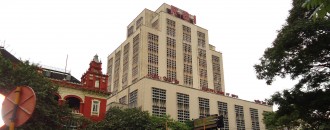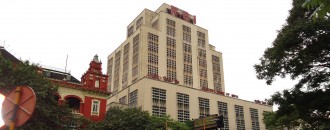
Retail inflation falls to multi-year lows
By Abin Daya
Dropping inflation and dropping industrial growth – signs of a slowing economy? It might be too early to tell, but it definitely has raised calls from multiple quarters, even from within the government for a rate cut by RBI. We will have to wait and see if the regulator obliges, as there is one school of thought that the low CPI inflation is due to the high base of last year, and hence RBI might wish to wait and see for a couple of months more. Policy announcements have a habit of going against expectations in the recent past, hence we will refrain from making any predictions on the same.
This week we talk about the two inflations – consumer and wholesale – as also the industrial growth indicators.
Both sets of inflation figures have hit historical lows, primarily on the back of significantly low food inflation. RBI has typically looked beyond food inflation and focussed more on core inflation, which has also been on a downward trend, and this is what raises hope of a rate cut in August.
Industrial growth has also dropped significantly, and what is more disturbing is the negative growth in capital equipment and consumer durables. This indicates that businesses and consumers are postponing investment decisions and remain sceptical about immediate growth.
Consumer Inflation
- Driven by a steep fall in food price inflation, retail inflation fell to a multi-year low of 1.54% in June 2017
- CPI inflation had hit a low of 2.2%, in May and fell further during June 2017 – inflation was at 5.8% in June 2016

- Looking at the chart above, which maps consumer inflation under the new series of 2011-12, this is the lowest print during the last 42 months, and possibly the lowest in the past 5 years
- Same can be said for the Consumer Food Price Inflation, which hit the negative territory with -1.1% in May, and extended it further at -2.1% in June 2017
- After hitting a peak of 8.4% in Jul 2016, Food Price Inflation has been on a steep downward trend due to the fall in prices of pulses and vegetables
- The base effect is one of the factors driving the low inflation figures currently, and this could start wearing out from Aug 2017 onwards
- However, the prevailing low prices in food grains due to abundant supply could be a mitigating factor, helping to keep inflation in check for some more time
- Pulses inflation is trending lower and lower every month, with the latest print of -21.9% being the lowest in many years
- Similarly, inflation in vegetables at -16.5% is other major factor behind the steeply falling food inflation

- Even core inflation (non-food inflation), which is of more concern to RBI, is trending lower, and this could leave room open for a rate cut in Aug
- While the largest drop has come in the F&B group, all other groups have recorded significant drop in inflation compared to the last year; exception is the Fuel & Light group
Wholesale inflation
- Declining food prices also dropped Wholesale Inflation to a 11-month low of 0.9% in Jun 2017, falling sharply from 2.17% in May 2017

- Wholesale inflation was -0.09% in June last year, and this eliminates any chances of base effect being the reason for the drop
- Similar to retail inflation, primary influencer has been the drop in food prices, evidenced by the downward trend in Food Index inflation
- Inflation in primary articles has dropped from 5.68% in Jun 2016 to -3.86% this year, while Food Index inflation dropped from 8% to -1.3%

- Within Primary Articles, inflation in Crude Petroleum & Natural Gas increased from -16.6% last year, to -6.1% this year, while inflation in Food Articles dropped to -3.5% from a high of 7.8%
- Minerals inflation, which was at a high of 9.5% fell to -2% this year, primarily due to inflation in copper dropping from 27.9% to -19.4%
- Coming along with the low print in Consumer Inflation, this improves the possibility of a rate cut by RBI in Aug
- However, there is also the possibility that RBI might wish to wait till October and look at the impact of base effect wearing off on CPI inflation, before cutting rates
Index of Industrial Production
- Industrial production dropped to an 18-month low of 1.7% in May 2017, affected by lacklustre performance in Mining and Manufacturing sectors

- While growth in electricity sector improved to 8.7% from 5.4% in April, it was not enough to pull up the IIP growth
- Manufacturing sector growth fell from 2.3% to 1.2% while Mining growth dropped from 3.2% to -0.9%
- IIP growth dropped from 2.8% in April, while it had grown by 8% in May 2016 – cumulative growth for Apr-May 2017 is at 2.3%
- The use-based classification provides a better picture of the IIP

- While the fall in growth is across all categories of goods, the steep fall in capital goods growth indicates that corporates remain cautious about investments
- The same is the case with consumers, as can be seen from the drop in consumer durables growth
- Growth in Infrastructure & Construction Goods, and Intermediate Goods remained flat at 0.1% and 0.7% respectively
- Dropping inflation and lacklustre IIP growth have given enough ammunition to the demand for rate cut by the RBI in the next policy announcement in Aug

Abin Daya the author of 'Basics of Trade: An India Perspective' is a FEMA expert, a career transaction banker, with close to 15 years of experience in corporate and transaction banking, in India.







 to success.
to success.